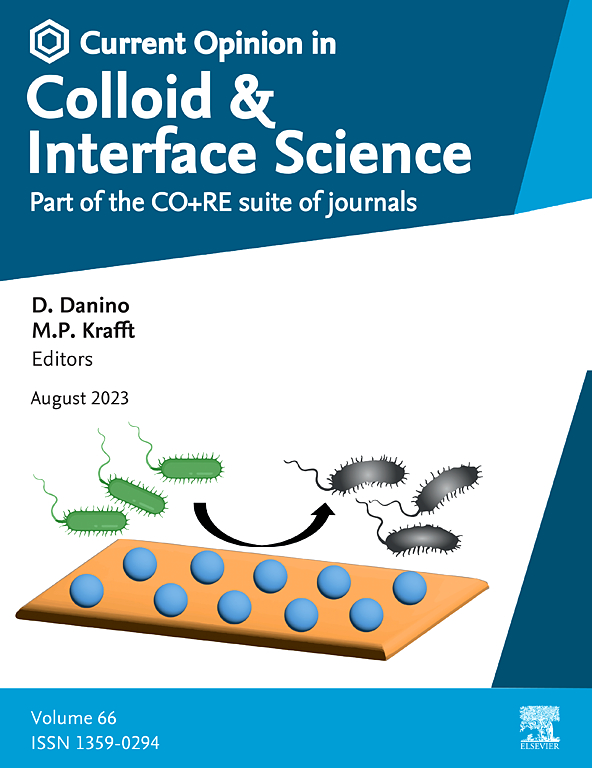Hydrogel-based inks for extrusion 3D printing: A rheological viewpoint
IF 7
2区 化学
Q1 CHEMISTRY, PHYSICAL
Current Opinion in Colloid & Interface Science
Pub Date : 2025-03-21
DOI:10.1016/j.cocis.2025.101918
引用次数: 0
Abstract
Extrusion 3D printing has achieved significant progress, emerging as one of the most important 3D printing methods for designing biologically relevant organs or tissue substitutes by bioprinting cell-laden inks. Swollen polymeric networks, or hydrogels, have emerged as the preferred biomaterial for fabricating cell-encapsulated inks appropriate for layer-by-layer extrusion through nozzles. The design aspects of the hydrogels play a crucial role in determining the flow behavior of these inks. The review first overviews the fundamentals of rheological measurements in extrusion-based 3D printing, followed by hydrogel ink design approaches, and their implications on the rheological properties. We also discuss the effect of cell density on rheology and 3D bioprinting outcomes. We identify the existing challenges in the field of extrusion bioprinting and discuss future directions to address them.

用于挤压3D打印的水凝胶油墨:流变学观点
挤压3D打印已经取得了重大进展,成为通过生物打印细胞负载墨水来设计生物相关器官或组织替代品的最重要的3D打印方法之一。膨胀的聚合物网络,或水凝胶,已经成为制造细胞封装墨水的首选生物材料,适合通过喷嘴逐层挤压。水凝胶的设计在决定这些油墨的流动行为方面起着至关重要的作用。该综述首先概述了基于挤出的3D打印流变测量的基本原理,其次是水凝胶油墨设计方法,以及它们对流变特性的影响。我们还讨论了细胞密度对流变性和3D生物打印结果的影响。我们确定了挤压生物打印领域存在的挑战,并讨论了解决这些挑战的未来方向。
本文章由计算机程序翻译,如有差异,请以英文原文为准。
求助全文
约1分钟内获得全文
求助全文
来源期刊
CiteScore
16.50
自引率
1.10%
发文量
74
审稿时长
11.3 weeks
期刊介绍:
Current Opinion in Colloid and Interface Science (COCIS) is an international journal that focuses on the molecular and nanoscopic aspects of colloidal systems and interfaces in various scientific and technological fields. These include materials science, biologically-relevant systems, energy and environmental technologies, and industrial applications.
Unlike primary journals, COCIS primarily serves as a guide for researchers, helping them navigate through the vast landscape of recently published literature. It critically analyzes the state of the art, identifies bottlenecks and unsolved issues, and proposes future developments.
Moreover, COCIS emphasizes certain areas and papers that are considered particularly interesting and significant by the Editors and Section Editors. Its goal is to provide valuable insights and updates to the research community in these specialized areas.

 求助内容:
求助内容: 应助结果提醒方式:
应助结果提醒方式:


